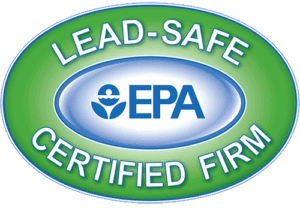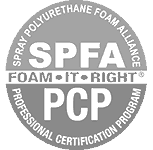Diversified Energy is proud to be an Environmental Protection Agency [EPA] Lead-Safe Certified Firm. In the Gulf South, we have a huge stock of homes built before 1978, and many of these homes are going through current, or planned future renovations.
The EPA requires individuals and firms who perform abatement projects in pre-1978 target housing and child-occupied facilities to be certified and follow specific work practices.
What Is The EPA’s Lead Renovation, Repair, and Painting Rule?
EPA’s Lead Renovation, Repair, and Painting Rule [RRP Rule] require that firms performing renovation, repair, and painting projects that disturb lead-based paint in homes, child care facilities and pre-schools built before 1978 have their firm certified by EPA [or an EPA authorized state], use certified renovators who are trained by EPA-approved training providers and follow lead-safe work practices.
Which Renovation Activities Are Covered By The Rule?
In general, any activity that disturbs paint in pre-1978 housing and child-occupied facilities is covered, including:
Remodeling and repair/maintenance
Electrical work
Plumbing
Painting preparation
Carpentry
Window replacement
Who Needs To Be Certified Under The RRP Rule?
EPA’s renovation, repair, and painting rules require both firms and people to be certified.
EPA’s Lead Renovation, Repair, and Painting Rule [RRP Rule] require that firms performing renovation, repair, and painting projects that disturb lead-based paint in homes, child care facilities and pre-schools built before 1978 have their firm certified by EPA [or an EPA authorized state], use certified renovators who are trained by EPA-approved training providers and follow lead-safe work practices.
Who is at Risk?
Children
Lead is particularly dangerous to children because their growing bodies absorb more lead than adults do and their brains and nervous systems are more sensitive to the damaging effects of lead. Babies and young children can also be more highly exposed to lead because they often put their hands and other objects that can have lead from dust or soil on them into their mouths. Children may also be exposed to lead by eating and drinking food or water containing lead or from dishes or glasses that contain lead, inhaling lead dust from lead-based paint or lead-contaminated soil, or playing with toys with lead paint.
Adults, Including Pregnant Women
Adults may be exposed to lead by eating and drinking food or water containing lead or from dishes or glasses that contain lead. They may also breathe lead dust by spending time in areas where lead-based paint is deteriorating, and during renovation or repair work that disturbs painted surfaces in older homes and buildings. Working in a job or engaging in hobbies where lead is used, such as making stained glass, can increase exposure as can certain folk remedies containing lead. A pregnant woman’s exposure to lead from these sources is of particular concern because it can result in exposure to her developing baby.
What are the Health Effects of Lead?
Lead can affect almost every organ and system in your body. Children six years old and younger are most susceptible to the effects of lead
Children
Even low levels of lead in the blood of children can result in:
Behavior and learning problems
Lower IQ
Hyperactivity
Slowed growth
Hearing Problems
Anemia
In rare cases, ingestion of lead can cause seizures, coma, and even death
Pregnant Women
Lead can accumulate in our bodies over time, where it is stored in bones along with calcium. During pregnancy, lead is released from the mother’s bones along with calcium and can pass from the mother exposing the fetus or the breastfeeding infant to lead. This can result in serious effects on the developing fetus and infant, including:
Cause the baby to be born too early or too small;
Hurt the baby’s brain, kidneys, and nervous system;
Increase the likelihood of learning or behavioral problems; and
Put the mother at risk for miscarriage
Other Adults
Lead is also harmful to other adults. Adults exposed to lead can suffer from:
Cardiovascular effects increased blood pressure and incidence of hypertension
Decreased kidney function
Reproductive problems [in both men and women]
Why Should You Hire A Certified Firm?
Common renovation, repair, and painting activities that disturb lead-based paint [like sanding, cutting, replacing windows, and more] can create hazardous lead dust and chips which can be harmful to adults and children. Home repairs that create even a small amount of lead dust are enough to poison your child and put your family at risk. For more information, read the EPA’s guide that describes why you should hire a lead-safe renovator.

















